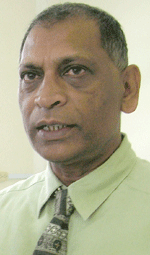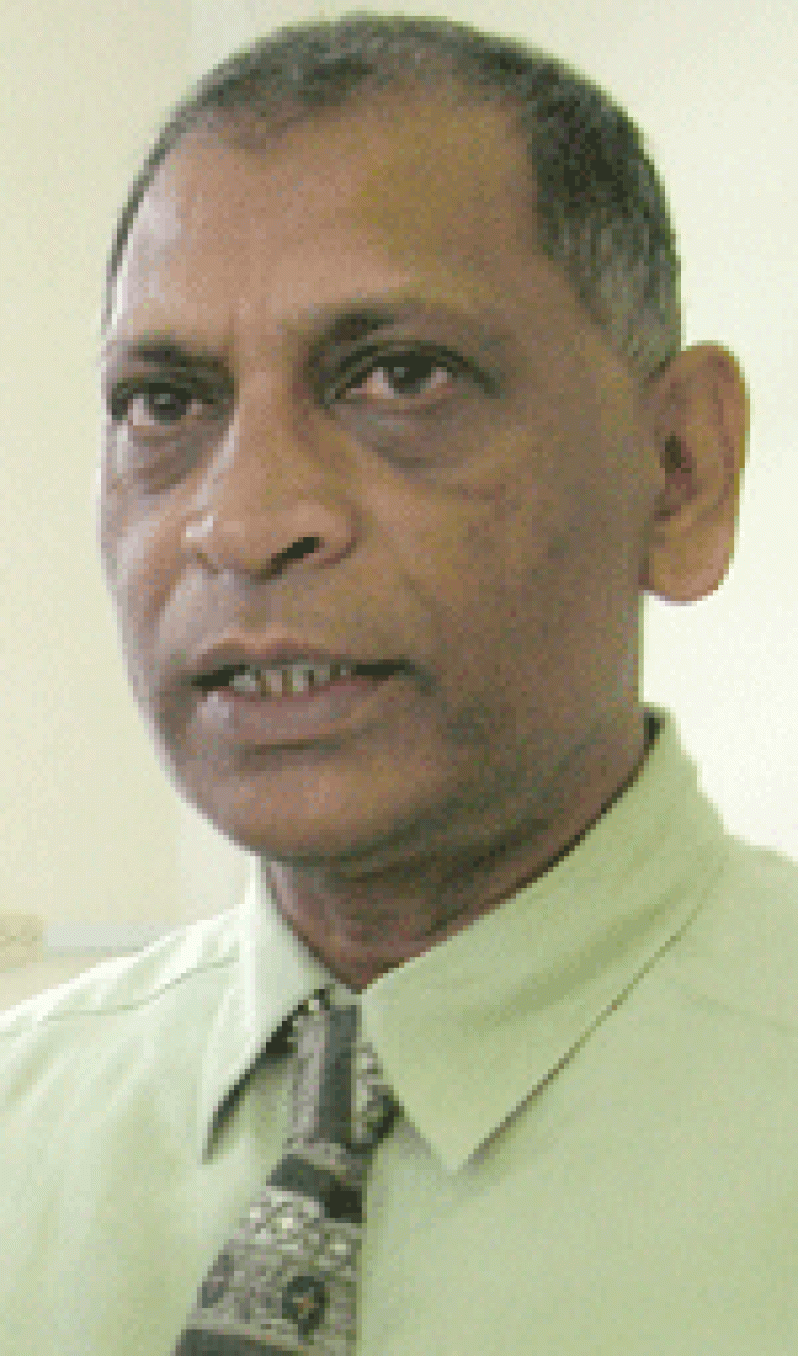WITH the final sugar crop about to come to a close, Minister of Agriculture, Dr. Leslie Ramsammy has indicated that production is below the annual target, owing much to the fact that the industry has become extremely weather sensitive.
 At a press conference at the Ministry’s Regent Road boardroom, he highlighted that the weather has been really unkind to the sugar industry this year. He noted that approximately six weeks were lost in the first crop, which was already short, resulting in the target for that crop not being reached.
At a press conference at the Ministry’s Regent Road boardroom, he highlighted that the weather has been really unkind to the sugar industry this year. He noted that approximately six weeks were lost in the first crop, which was already short, resulting in the target for that crop not being reached.
The production target for the first crop was set at 100,000 tonnes, but only 71,000 tonnes were achieved. He said that they fell short by some 29,000 tonnes, which they attempted to make up for in the second crop.
A target of 160,000 tonnes was set for the second crop, which, according to the minister, represented approximately 140,000 tonnes for the second crop and an additional amount to make up for the production lost in first crop.
He revealed that thus far, 146,000 tonnes of sugar have been produced in the second crop and a total of approximately 217,000 tonnes for the year. Hence, the Guyana Sugar Corporation is approximately 19,000 tonnes short of its annual target of 236,000.
In addition, he stated that while the Uitvlugt sugar factory has closed off grinding, the others have not officially closed as yet, though not fully operational at present.
“We were hoping to go up to the 22nd of December, but none of the factories are fully operational now, not because they have a problem, but because of the rain. So we will keep them functioning so that we could have as much sugar as possible,” he asserted.
Dr. Ramsammy added that since mid-November, rain has been affecting the operations of the sugar factories. He explained that when there is one day of rainfall, essentially two days are lost because if the canes cannot be burnt one day, they cannot be cut the next.
He further pointed out that in the old days; there was rainfall as well, though the industry was not affected as much. According to him, this is because the older generation, and even the government, had an ambition to ensure that their children do not work in the sugar industry, particularly cutting cane.
“…And they succeeded; but having succeeded, they put the most important industry in this country at risk,” he stressed.
The minister pointed to the Uitvlugt sugar factory, for example, which needs about 900 cane harvesters in order to effectively remove the canes in the fields. However, he stated that if that estate gets 350 cane harvesters, they are thankful, because labour in that field is so scarce.
He stated that the same situation exists at all estates countrywide, but that the most affected are the estates at Uitvlugt, Wales and Enmore, owing to their proximity to other job markets.
“So you now have competition. When I grew up, the sugar estate was the main employer. You didn’t have a choice, you needed the sugar industry. Now it has reversed, the sugar industry needs you,” he remarked.
A response to the labour issue has been the wide mechanization of the industry. Ramsammy related that though mechanization has become critical, there are new issues arising out of that mechanization. Particularly, he mentioned, heavy machinery cannot work when it is raining, because they can damage the fields and the dams.
He further explained that when sugar cane is cut, it is left to grow back about seven or eight times over, hence heavy machinery operating in the soft fields can cause damage.
He emphasized that while labour can be replaced by machines, it has caused the industry to become extremely weather sensitive.
Dr. Ramsammy pointed out that years ago, even when it rained, the cane cutters would cut the canes and load the punts so the factory can grind. However, now when it rains everything stops.
In addition, he noted that very few of the cane cutters now cut and load the canes. Instead, most of them are only willing to cut and stack. He related that a bell loader is used to load the punts, which cannot work in the rain, so most manual cane harvesters also do not work when the bell loader cannot work.
He added that the estates are becoming even more mechanized and pointed to the Skeldon factory which is a very modernized facility where the canes are being cut by machines. Additionally, he mentioned that there are also two cane harvesting machines at the Blairmont estate, and very soon most of the cane at Enmore will also be cut mechanically.
He stressed that labour can be replaced, but there is nothing that can be done to control the weather. He highlighted that most sugar producing countries worldwide only have one crop, because they have a prolonged dry season and then a prolonged wet season. However, that this is unlike Guyana.
“There is no one long prolonged period, and that is what our challenge is. Guyana is one of the rare countries in the world with a sugar industry that has two crops. Most industries have one crop,” he stated.



.jpg)








